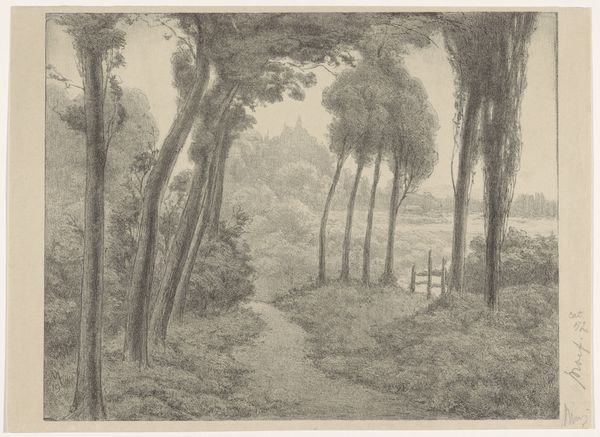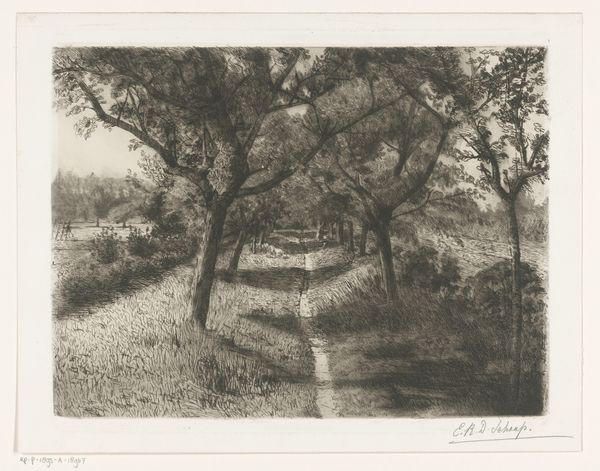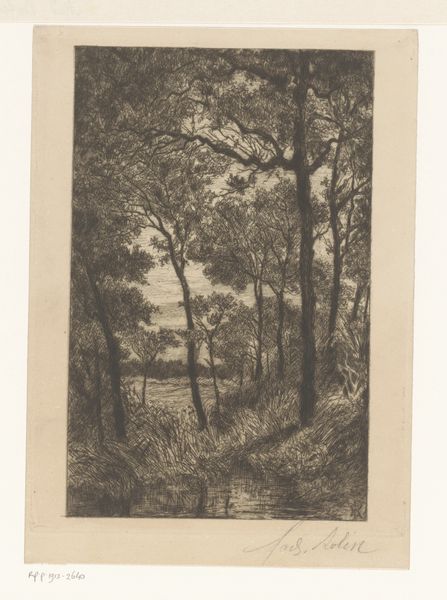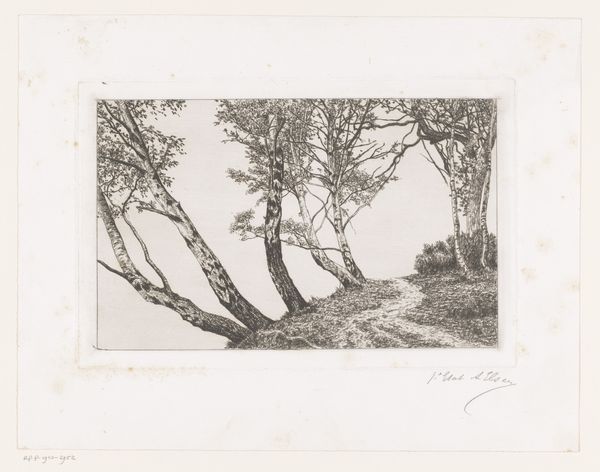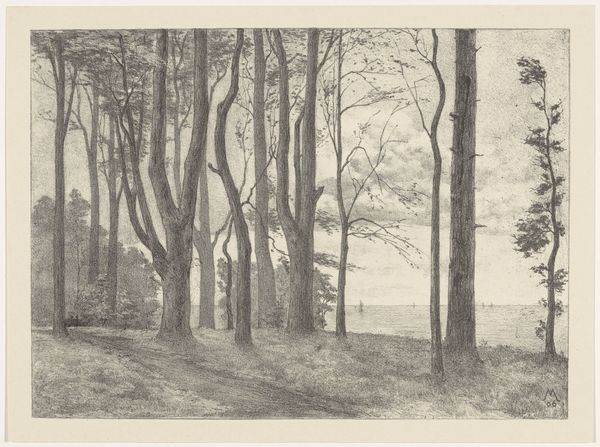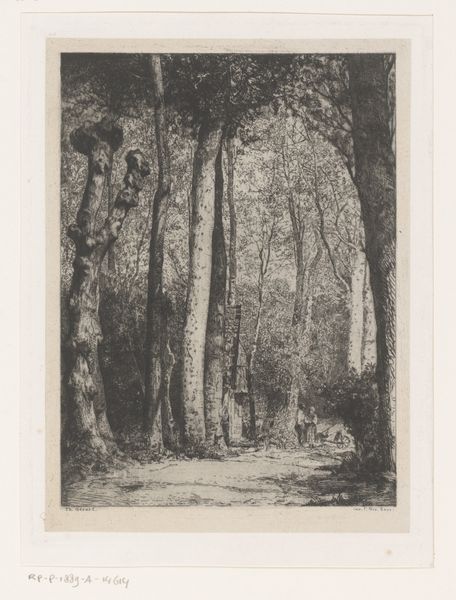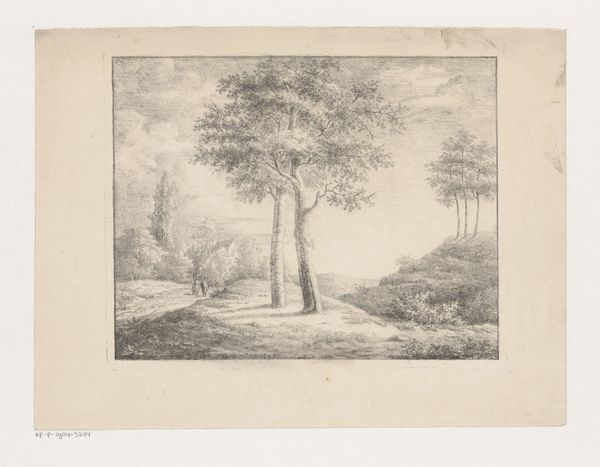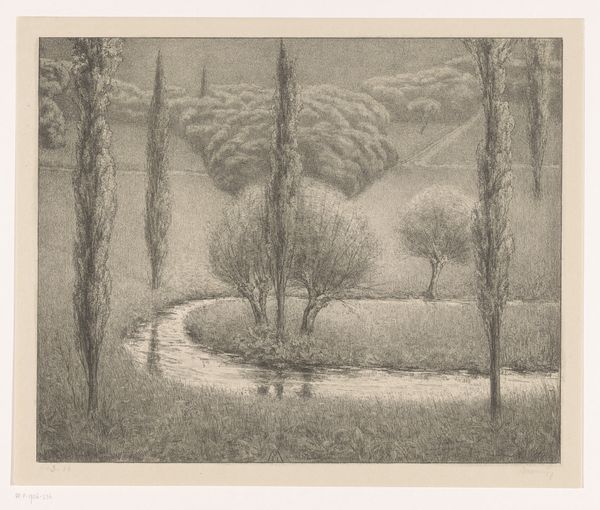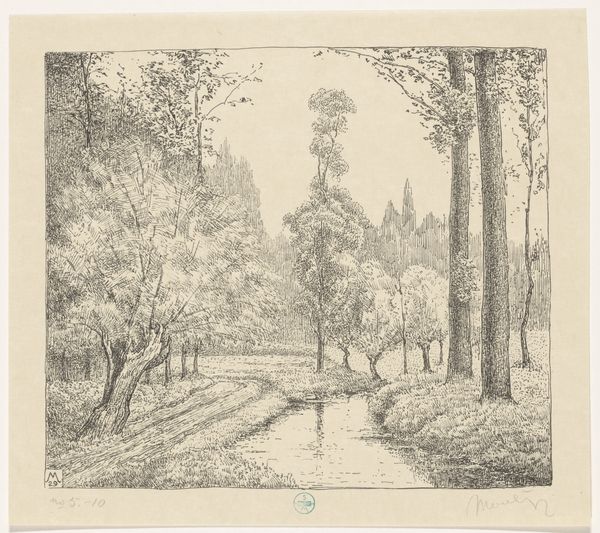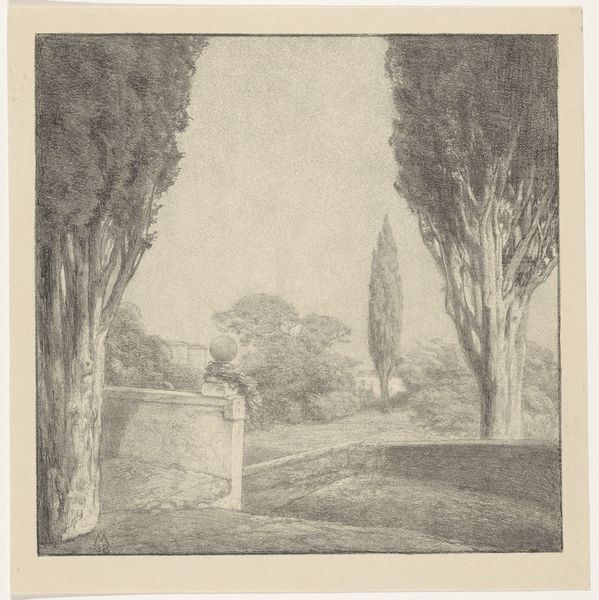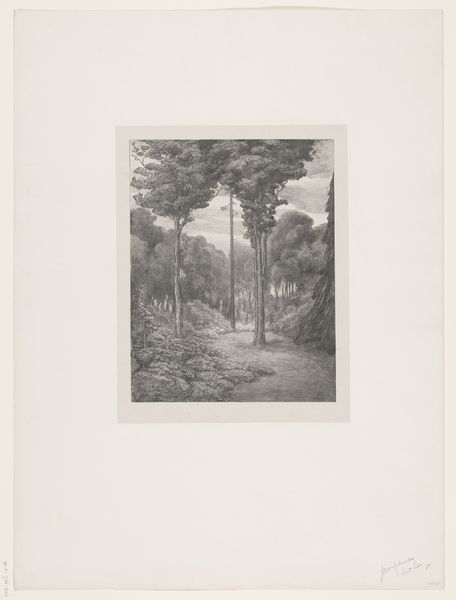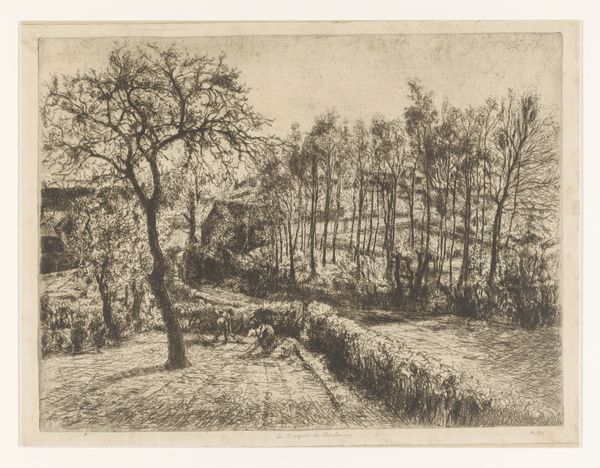
drawing, etching, pencil
#
drawing
#
etching
#
landscape
#
etching
#
pencil
Dimensions: height 374 mm, width 536 mm
Copyright: Rijks Museum: Open Domain
Editor: We’re looking at Simon Moulijn’s "Landscape with Poplars and Cypresses," created around 1918. It's an etching with pencil and feels surprisingly serene despite the rather stark trees. How do you read the composition of this landscape? Curator: The composition is a calculated interplay of verticals and receding planes. Note the repetition of the tree trunks – vertical elements that rhythmically divide the pictorial space, creating a sense of depth. This sense is further developed by the etching marks, creating variations of dark and light and therefore the sensation of atmospheric perspective, drawing the eye towards the lighter background. Does that linearity lend itself to an interpretation? Editor: Well, the contrast between the stark, almost rigid verticals of the poplars and the softness of the background certainly directs the eye. Does that structure speak to anything specific, perhaps the influence of symbolism? Curator: More generally, the landscape genre allows Moulijn to study light and form itself. One finds an exploration into the properties of line, shape, and tone, even though these formal aspects are disguised behind trees and vegetation. Think about how line dictates the composition – how each individual element adheres to this rigorous linear methodology and how variations on the same visual construction create very different spaces throughout. What overall effect does it have? Editor: I see what you mean! There's almost an architectural quality, a calculated use of space rather than a purely representational view of nature. The more structured front and implied vanishing point gives the illusion of greater depth despite it being relatively uniform with less dark to light. The contrast between defined planes feels deliberate. Curator: Precisely. And, considered from a structural perspective, we see it produces an almost geometric interpretation of nature in pursuit of light itself. Editor: I see, analyzing form and structure illuminates how Moulijn abstracted and organized this space, revealing something more than just a pretty landscape! Thanks for breaking down the architecture! Curator: Indeed, examining its visual organization leads to interesting insights. It shifts our perception beyond simple representation.
Comments
No comments
Be the first to comment and join the conversation on the ultimate creative platform.
